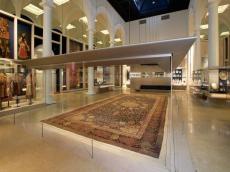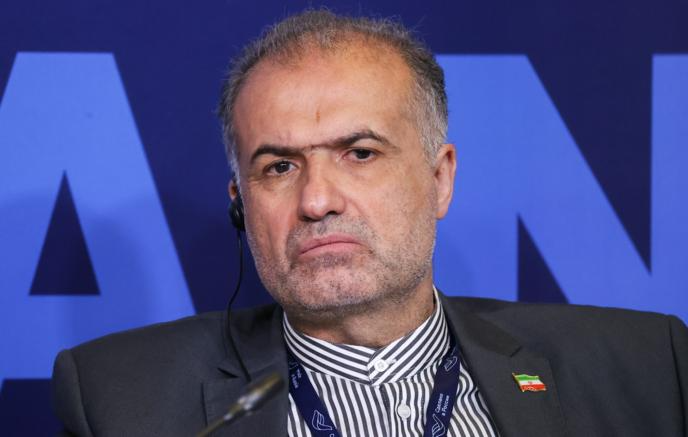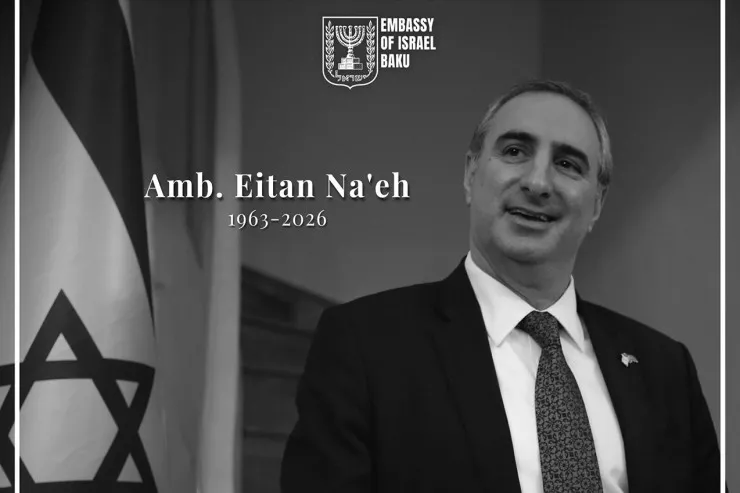|
|
TODAY.AZ / Arts & Entertainment
Sheikh Safi carpet: Eighth wonder of the world
25 September 2022 [14:57] - TODAY.AZ

By Azernews
By Vugar Khalilov
Azerbaijan is one of the oldest centers of carpet weaving in the world. The art of carpet weaving, which is the national-cultural asset of the country, and has become a symbol of the Azerbaijani people, is distinctive owing to its high creativity and technical proficiency, including its unique ornaments.
With its antiquity, unique design, and superior craftsmanship, the renowned Sheikh Safi carpet is, undoubtedly, one of the best examples of global carpet art. The legendary carpet - a unique piece of art that the Azerbaijani people gifted to the world's cultural heritage - was woven in 1539.
According to historians, the idea of creating the carpet belonged to Tahmasib I, the son of Shah Ismail Khatai, who founded the Safavid dynasty, to honor his grandfather Abu Ishaq Ardabili. Experts claim that carpet weaving occurred in the same area and time period as the construction of mosques and tomb complexes. The calligraphy and miniatures on the mausoleum's dome and the patterns on the medallion in the center of the carpet are identical.
It has already been established that the carpet was woven by Tabriz craftsman, Maqsud Kasheni, who spent two years before finishing it in 1539. The carpet stands out for its vibrant coloring, a wide range of tones, and exceptional fineness. The master craftsman, who embroidered Iranian poet Hafiz's verses, also mentioned his name on the carpet: "The work by the slave of the holy land, Maqsud Kasheni, 946". The master artisan had no idea that the carpet would one day be referred to as "the eighth wonder of the world".
The textile exhibit has a total size of 56.12 square meters and is regarded as an art miracle by specialists. One million loops were used to weave the carpet. This wonderful example of craftsmanship has been exhibited as the Ardabil Carpet at the Victoria and Albert (V&A) Museum in London. The name Sheikh Safi was given to the carpet by Azerbaijani visual artist Latif Karimov.
Due to a lack of care for cultural heritage, the carpet that had long graced the Sheikh Safi compound was sold at auction in London in 1893. The Victoria and Albert Museum was able to purchase it for 25,000 pounds thanks to a donation from the British people.
The refusal of rich locals to set aside finances for the restoration of the Sheikh Safi complex, which was devastated by the earthquake in Ardabil, was the cause of this apathy. As a result of the locals' disregard for the religious-architectural structure, which was the symbol of the city, the complex's staff was compelled to hold an auction in order to raise money for repairs.
At that time, English carpet trader Ziegler and Co. branches from Manchester were expanding their business in Tabriz. There was a rumor that a company employee had been curious about the carpet's price. After visiting Ardabil in 1843, traveler U. R. Holmes wrote in Tales from the Caspian Coast: "I have never seen a carpet like the one on the floor in the Safavid mosque-tomb." However, in 1891, the carpet vanished from the tomb.
Among the things sold was a pair of carpets that were put on the mosque's floor. They were initially bought by Ziegler and Co., and later one of them was sold to the museum through an auction in London.
Along with the Sheikh Safi carpet, the gold-plated sword of the Safavid ruler Shah Tahmasib I, as well as Safavid miniatures and pottery are displayed among the most valuable items of the Victoria and Albert Museum. Unfortunately, they were all given credit as Iranian artifacts.
URL: http://www.today.az/news/entertainment/225951.html
 Print version
Print version
Connect with us. Get latest news and updates.
See Also
- 21 January 2026 [15:19]
Nizami Cinema Center premieres historical-documentary animation - 21 January 2026 [14:43]
Emin Afandiyev's film awarded at Dhaka Int'l Film Festival - 21 January 2026 [13:02]
Int'l Mugham Center commemorates Black January victims - 20 January 2026 [15:48]
Presidential Library commemorates victims of January Tragedy - 20 January 2026 [15:10]
Composers' Union pays tribute to victims of Black January - 20 January 2026 [12:03]
YARAT launches third season of film school - 20 January 2026 [11:39]
Educational institutions mark National Mourning Day - 20 January 2026 [10:20]
Baku to hold concert honoring victims of Black January - 19 January 2026 [15:06]
Etibar Asadli infuses Middle Eastern rhythms in latest album - 19 January 2026 [12:58]
Leyla Aliyeva visits MESOB Public Service Center in Ethiopia
Most Popular
 Trump reiterates claim of 'Russian threat' over Greenland, saying 'it is time'
Trump reiterates claim of 'Russian threat' over Greenland, saying 'it is time'
 Why sanctions against Iran are hitting so hard ...Of Armenia
Why sanctions against Iran are hitting so hard ...Of Armenia
 History repeats itself, but Black January won't happen again
History repeats itself, but Black January won't happen again
 Where can you find doctors who could cure Dugin?
Where can you find doctors who could cure Dugin?
 Iran links proposed Western sanctions to Israel, draws russian criticism of Merz
Iran links proposed Western sanctions to Israel, draws russian criticism of Merz
 Leyla Aliyeva visits MESOB Public Service Center in Ethiopia
Leyla Aliyeva visits MESOB Public Service Center in Ethiopia
 Former Israeli Ambassador to Azerbaijan Eitan Naeh dies at 63
Former Israeli Ambassador to Azerbaijan Eitan Naeh dies at 63
